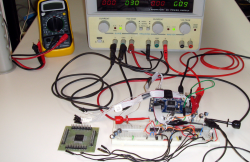There’s an old saying: “I don’t know what programming language scientists and engineers will use in the 22nd century, but I know it will be called FORTRAN.” FORTRAN was among the first real programming languages and, along with LISP, one of the oldest still in common use. If you are one of those that still loves FORTRAN, you no longer have to be left out of the Web development craze thanks to Fortran.io.
Naturally, the Fortran.io site is served by — what else — FORTRAN. The system allows for Jade templates, SQLite databases, and other features aimed at serving up web pages. The code is hosted on GitHub, and you can find several examples there, as well.
If you’ve ever wanted to do formatted I/O to a web page, here’s your chance. Come to think of it, why not? We’ve seen servers in BASIC and even in Linux shell script. Of course, today’s FORTRAN isn’t the one we learned back in the 1970’s (we assume if you didn’t learn about FORTRAN in the 1970’s, you quit reading this post a while back… prove us wrong and show us your FORTRAN projects).






















